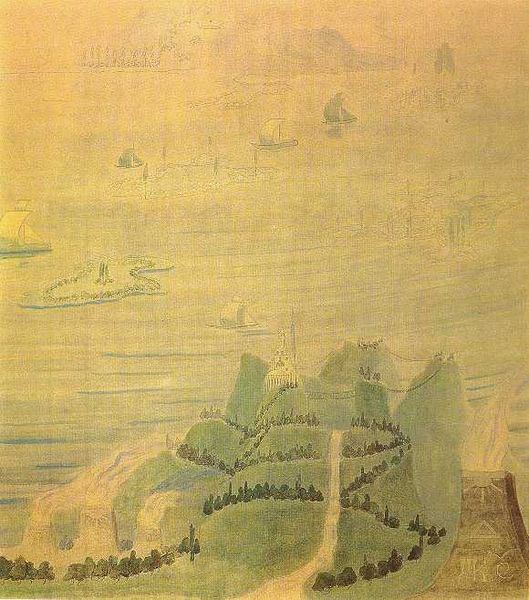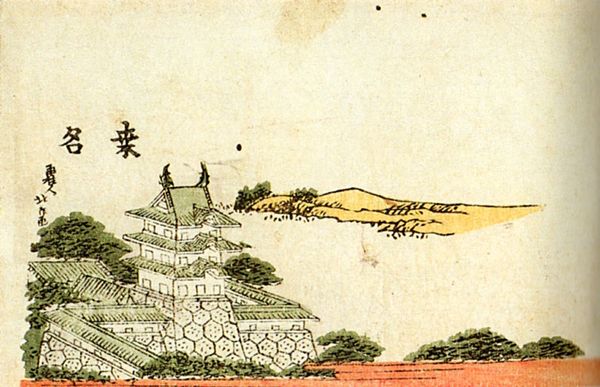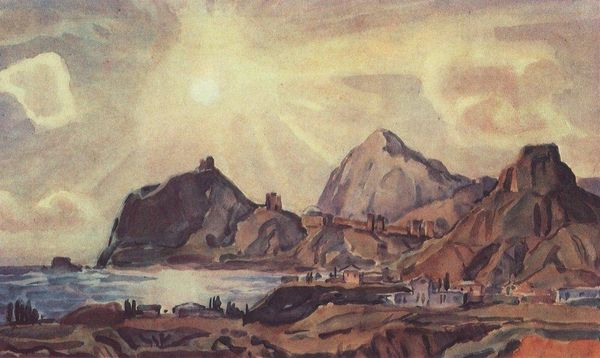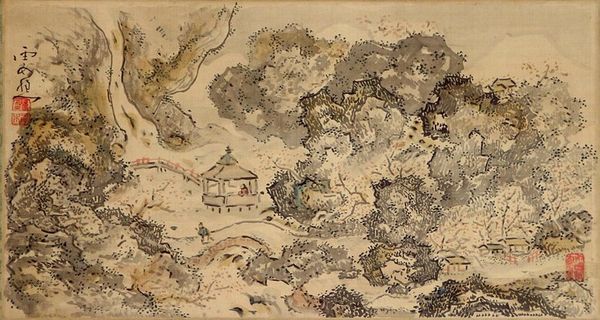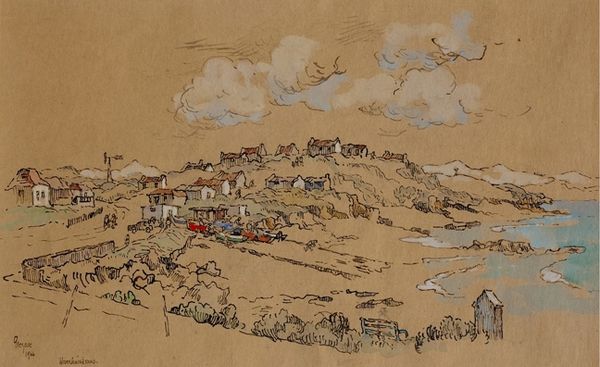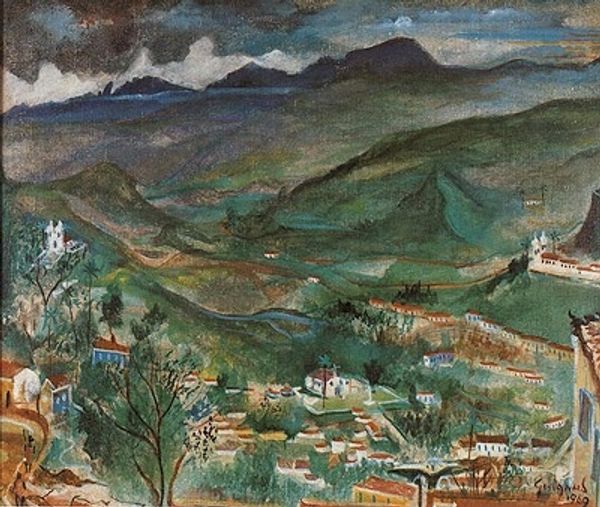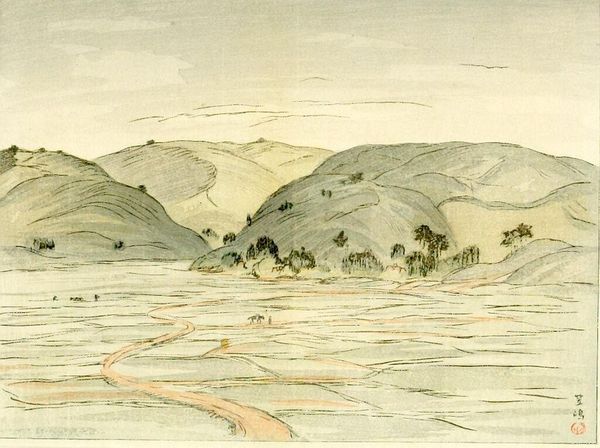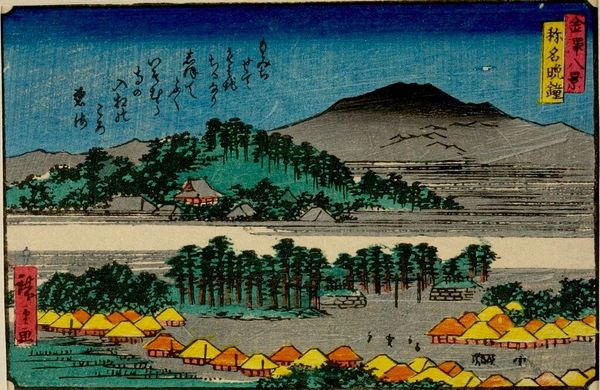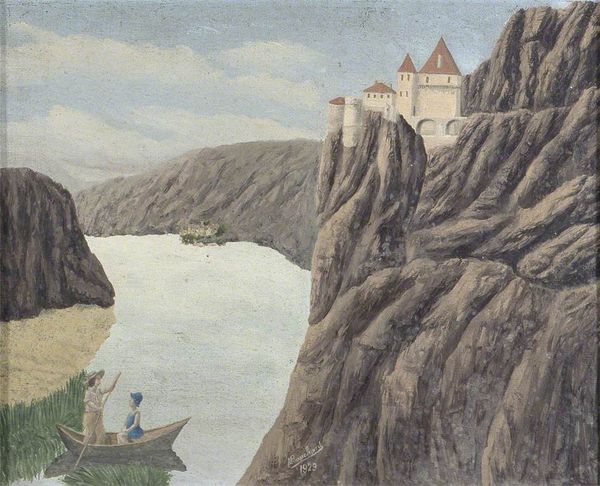
drawing, plein-air, watercolor, ink
#
drawing
#
plein-air
#
landscape
#
watercolor
#
ink
#
romanticism
#
cityscape
#
mixed medium
#
mixed media
#
watercolor
#
sea
Dimensions: 13 x 18 cm
Copyright: Public domain
Editor: Here we have Delacroix’s "Bay of Tangier in Morocco," likely done sometime in the 1830s or 40s using watercolor and ink. It gives a broad view of the city...it's the linear quality of the drawing, and especially those dramatic shadows in the foreground, that I find really striking. What do you see in this piece? Curator: I am immediately drawn to the structural elements. Consider how Delacroix uses line and color to define the different planes within the composition. The solidity of the city walls, juxtaposed with the more fluid rendering of the sea and sky...it presents a compelling dialogue between permanence and ephemerality. Editor: So the contrast is intentional? To emphasize…what exactly? Curator: Not necessarily "intentional" in a programmatic way, but we can observe the effects of these contrasting formal choices. For instance, how the watercolor medium, typically associated with softness and light, is here deployed to create a sense of depth and recession through layering. And note how the shadows act not merely as representations of light, but as independent compositional elements, structuring the space and guiding the eye. Editor: That’s a fascinating point. I’d originally considered the shadows to just be a feature of the drawing itself, and not something more active within the overall image. Curator: Exactly. It’s the interplay between these elements – line, color, form, shadow – that yields the artwork's unique aesthetic quality. By closely observing these components, we get nearer the heart of its effect on the viewer. Editor: This has helped me appreciate the way that medium and execution really determine the feel of a place and that "cityscape" is maybe too simple of a description. Curator: Indeed. Form is content, and content, form. The careful analysis reveals the complex meaning.
Comments
No comments
Be the first to comment and join the conversation on the ultimate creative platform.


